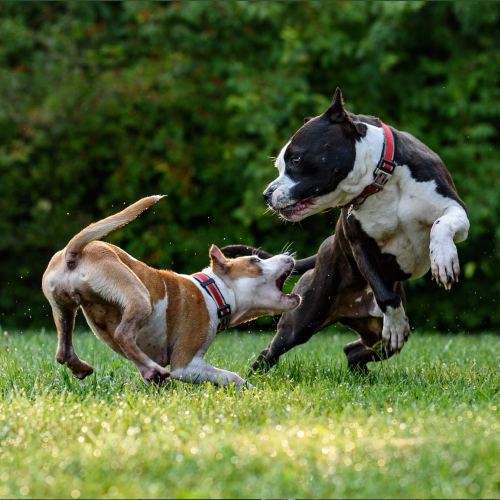We use cookies to make your experience better. To comply with the new e-Privacy directive, we need to ask for your consent to set the cookies. Learn more.
Behavioural Rehabilitation with Clickers: Addressing Fear and Aggression

We all adore our furry companions, but there are instances when they exhibit behaviours that can be challenging to handle. Whether it's due to fear, anxiety or aggression, these behaviours can prove frustrating and potentially risky for both the dog and its owners.
Behavioural rehabilitation entails an approach to modifying undesirable behaviours in dogs. By gaining an understanding of the causes and implementing positive training techniques, its aim is to enhance the overall quality of life for our furry friends.
Addressing Fear Through Clicker Training
Effectively addressing fear in dogs necessitates teaching them behaviours in a positive and rewarding manner. Clicker training plays a role in breaking down fear-inducing situations into manageable steps. Through clicker training, we can create positive associations with triggers that induce fear and replace it with calm behaviour.
Recognising Fear Signals in Dogs
To effectively address fear in dogs, it's crucial to be able to identify the signs. Pay attention to their body language cues, such as trembling, hiding or cowering, as well as stress indicators like lip licking and excessive yawning. Also, take note of signs such as a lowered tail, flattened ears, and dilated pupils. Defensive behaviours, like growling and biting, may also indicate fear.
Using a Clicker to Manage Fear
Begin by incorporating training exercises and rewarding your dog for each small step they take towards facing their fears. Dog clickers will help mark the moment of desired behaviour when your dog shows courage. To create positive associations with fear triggers, pair the sound of the clicker with high-value treats. Gradually increase the difficulty of fear-inducing situations while rewarding calm behaviour. You can also play dog clicker games with your dog once they become more confident.
Managing Aggression with Clicker Training
Clicker training is a method for managing aggression in dogs. It serves as a teaching tool that enables clear communication and redirection of aggressive behaviours. By using reinforcement techniques, clicker training helps dogs develop impulse control in aggressive situations.

Understanding Aggressive Behavior in Dogs
Recognising signs such as growling, lunging, or biting is crucial when identifying aggression. Aggression can stem from factors like fear, resource guarding, or frustration. To effectively rehabilitate behaviour, it's essential to understand the root cause. Poor socialisation or negative experiences can also contribute to aggression. Analysing triggers and context helps owners to develop an effective training plan.
Using Clicker Training to Manage Aggression
To encourage calmness and redirect your dog's attention away from aggression triggers, it's useful to utilise a clicker. By rewarding alternative behaviours such as sitting or paying attention to their owner, we can gradually expose them to controlled situations that typically elicit aggressive responses and reinforce calm reactions. In cases of extreme aggression, it is advisable to seek professional guidance.
In conclusion, employing clicker training for rehabilitation proves effective in addressing fear and aggression in dogs. However, it is crucial to recognise when the assistance of a dog trainer is necessary for more complex behavioural issues.
